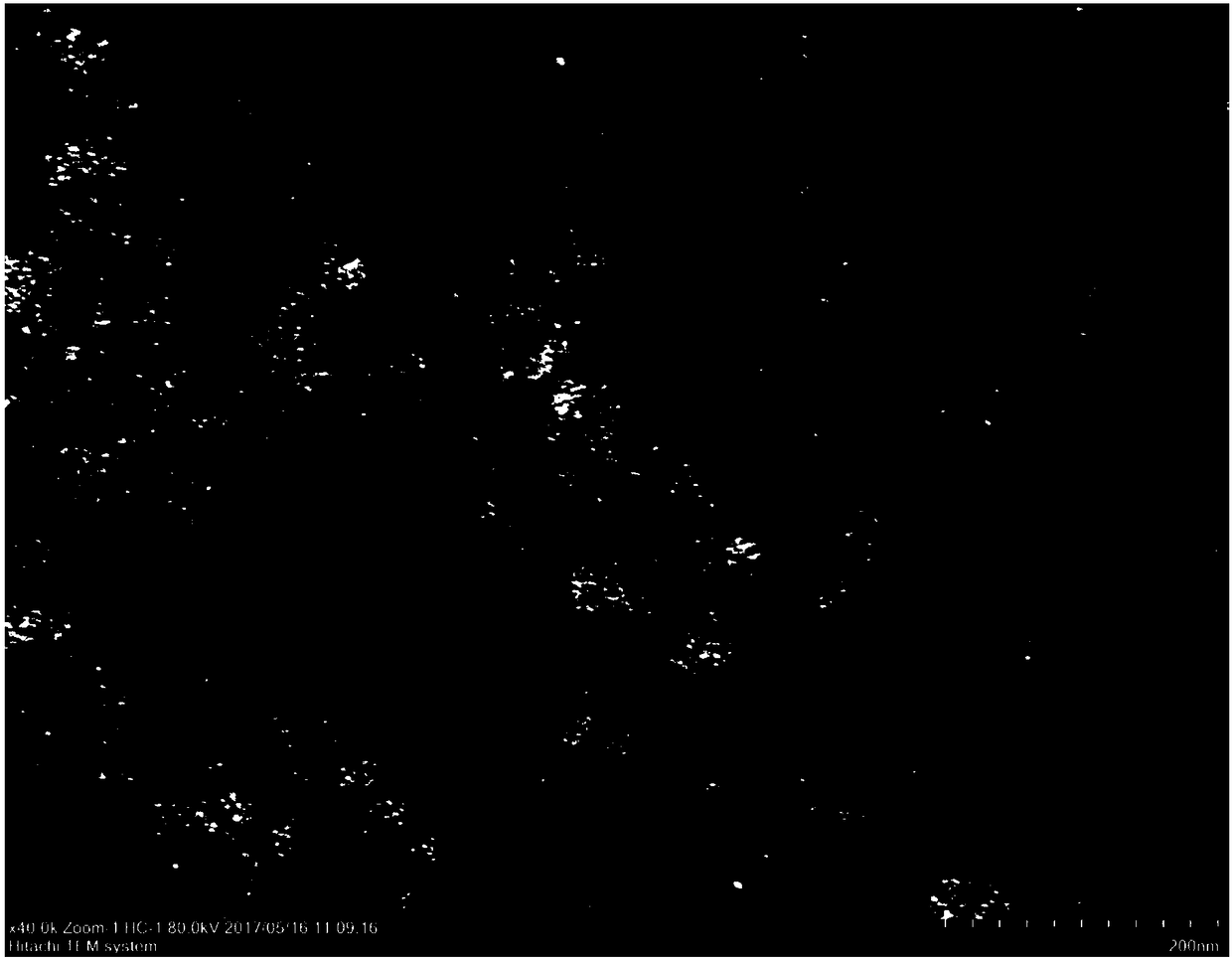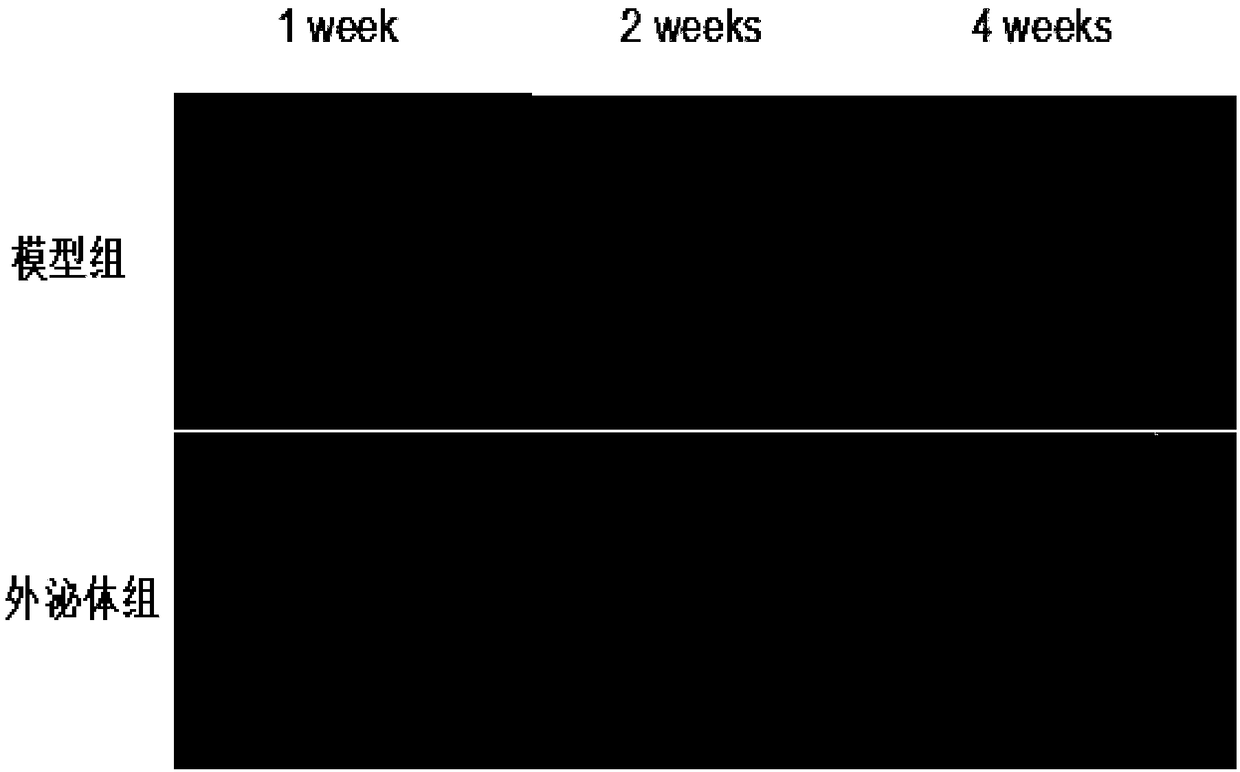Dog MSC exosome preparation and preparing method thereof
A technology of exosomes and systems, applied in the field of bioengineering, can solve the problems of scar formation, affect the appearance, and easy secondary infection, etc., achieve the effect of stable dosage and guaranteed therapeutic effect
- Summary
- Abstract
- Description
- Claims
- Application Information
AI Technical Summary
Problems solved by technology
Method used
Image
Examples
Embodiment 1
[0019] Embodiment 1, the preparation of canine UC-MSC
[0020] 1) Primary culture of canine UC-MSC
[0021] Take the umbilical cord tissue of newborn dogs, remove the membranous tissue and vascular tissue in the ultra-clean workbench, clean the remaining glial tissue and cut it to 1mm with sterile dissecting scissors 2 Then transfer the tissue to a 15mL centrifuge tube, add 0.1mg / mL type Ⅰ collagenase, tighten the bottle cap and place it in a 37°C water bath for digestion for 4 hours. After the tissue block is basically digested, filter it with a 100-mesh cell sieve. Centrifuge the filtrate at 1200rpm for 5min, discard the supernatant, resuspend the pellet with complete DMEM medium (88% DMEM basal medium + 1% double antibody solution + 1% L-glutamine), and inoculate the suspension into a cell culture dish , and then placed at 37°C, 5% CO 2 Cultivated in an incubator;
[0022] 2) Subculture of canine UC-MSC
[0023] When the cells were cultured for 24 hours, the original cu...
Embodiment 2
[0029] Example 2, Preparation of Canine UC-MSC-derived Exosome Preparation
[0030] 1) Isolation of canine UC-MSC-derived exosomes
[0031] 1-1) Preparation of exosome-free fetal bovine serum
[0032] Use a 0.22um filter membrane to filter fetal bovine serum to remove particles larger than 220nm, collect the filtrate, place it in an ultrahigh-speed centrifuge tube, and centrifuge at 120000g for 90min at 4°C, carefully collect the supernatant, and then use 0.22 um membrane filter and sterilize for later use;
[0033] 1-2) Isolation of exosomes derived from canine UC-MSCs
[0034] The P3-P5 generation UC-MSCs were cultured with a complete medium containing 10% exosome-free fetal bovine serum, 1% double antibody, 1% L-glutamine and 88% DMEM basal medium, and the supernatant was collected in Centrifuge at 300g for 10min at 4°C to remove dead cells; collect the supernatant and centrifuge at 16,500g for 20min at 4°C to remove cell debris; filter the supernatant with a 0.22um filt...
Embodiment 3
[0041] Example 3, Canine UC-MSC-derived exosome preparations for the treatment of canine skin damage
[0042] 1) Establishment of canine skin injury model
[0043] Twelve healthy puppies with the same breed, age, and growth status were randomly divided into two groups, with 6 repetitions in each group. After the dog was anesthetized, local hair removal, disinfection, and draping were performed. Under aseptic operation, a 4×4cm square full-thickness skin injury model was made in the middle of the dog’s back and below the shoulder blade. The whole operation process was performed by the same experimenter to avoid too much error.
[0044] 2) Local injection therapy of canine UC-MSC-derived exosome preparation
[0045] After the wound model was established, drugs were injected subcutaneously at 4 points around the wound, each point was 1 cm away from the incision, and the direction of needle insertion was towards the wound to avoid the needle tip from penetrating the cortex. The ...
PUM
 Login to View More
Login to View More Abstract
Description
Claims
Application Information
 Login to View More
Login to View More - R&D
- Intellectual Property
- Life Sciences
- Materials
- Tech Scout
- Unparalleled Data Quality
- Higher Quality Content
- 60% Fewer Hallucinations
Browse by: Latest US Patents, China's latest patents, Technical Efficacy Thesaurus, Application Domain, Technology Topic, Popular Technical Reports.
© 2025 PatSnap. All rights reserved.Legal|Privacy policy|Modern Slavery Act Transparency Statement|Sitemap|About US| Contact US: help@patsnap.com


